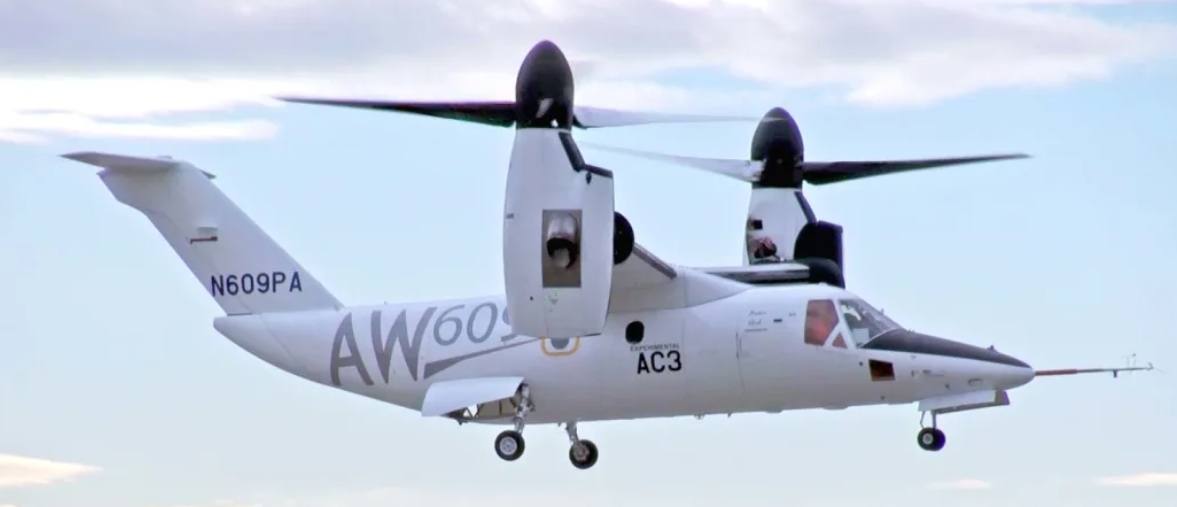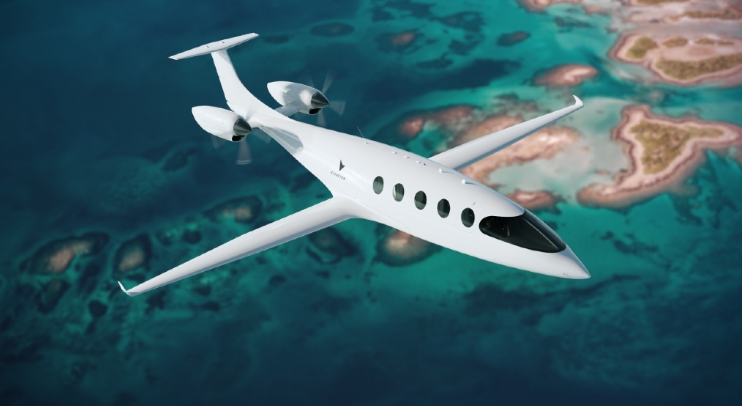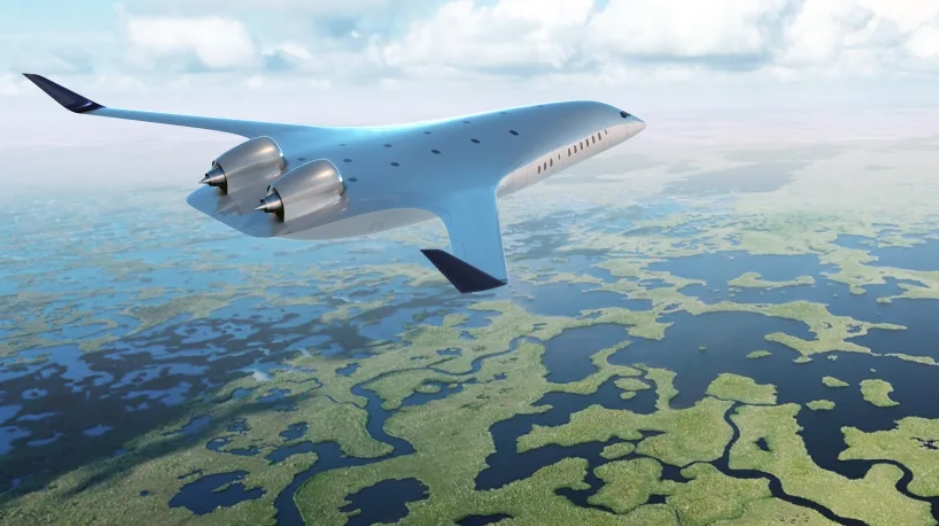If time travelers from 1968 found themselves in an airport today, they would see many changes that would surprise them. However, airplanes would look remarkably familiar. Despite significant advancements in materials, engines, and avionics, which have made 2017 the safest year in aviation history, commercial airplanes remain structurally similar to those of the 1960s. In fact, the Boeing 737, one of the best-selling airliners in history in its numerous versions, first took to the skies in 1967.

This is because commercial aviation prioritizes safety, preferring proven solutions, and also because other developments – such as in materials and engines – mean that traditional construction remains relevant. However, as the industry desperately seeks ways to reduce carbon dioxide emissions, it faces a more serious challenge than other sectors precisely because it’s so difficult to abandon its core technologies. Perhaps it’s time to try something new. So, what might air travel look like in 50 years?
Read also: All about the Rosalind Franklin rover, part of the ExoMars program
The future of passenger airplanes
For many years, there have been several attempts to change the paradigm of aircraft design. In the 1970s, there were promises of a future of supersonic travel that never became a reality, except for the limited flights of the Concorde. The idea of an aircraft with a “blended wing,” similar to the low-observable Northrop B-2 bomber, has been occasionally promoted but has yet to see significant success.
-

Concorde (1962 р.)
A combination of technical and financial reasons led the aviation industry to abandon these rather unconventional proposals and focus on more conventional designs, which are the norm today. Will the next 50 years continue the slow, steady path of the last half-century? Or will we once again see a rapid technological breakthrough, characteristic of aviation in the period between the end of World War I and the Apollo Moon landing? Don’t be misled by the apparent lack of impressive breakthroughs. Some major changes are already on the horizon.
Read also: 6 Intercontinental Ballistic Missiles (ICBMs) That Could End the World
Electric airplanes
Most short-haul flights will likely be operated by electric aircraft over the next few decades, and this will change our perception of air travel. Smaller electric motors will make distributed propulsion possible, similar to what is used in the NASA X-57 prototype. Lower noise levels and reduced operating costs will allow electrically powered aircraft to fly much closer to where people live and work.
-

Zunum Aero
In fact, several modern electric aircraft projects aim not only to replace ground transportation between cities, as planned by concepts like Zunum and Eviation, accommodating 9 to 12 passengers, but also within cities. Flying taxis will become a reality very soon, but it remains to be seen whether the futuristic-looking concepts of Vahana and CityAirbus are truly a glimpse of the future. In any case, “door-to-door” flights are not solely the prerogative of electric aircraft.
While not a new concept, the use of tiltrotors—aircraft that can transition from vertical takeoff to a fixed-wing configuration—has predominantly been limited to American military applications.
-

AW609 - Advertisement -
However, the Italian helicopter manufacturer Leonardo is now preparing for the commercial launch of the civilian model AW609, which, if successful, could potentially transform executive and regional aviation. The AW609 combines elements of both airplane and helicopter design.
Many companies are developing electric powertrains for air taxis, commuter aircraft, and electric vertical takeoff and landing (eVTOL) vehicles, many of which are autonomous. For example, electric motor manufacturer MagniX is collaborating with battery supplier H55 to convert the fleet of Harbour Air, a seaplane operator based in Vancouver, into a fully electric fleet. Additionally, the Israeli company Eviation has developed Alice, the world’s first all-electric commuter aircraft with battery technology akin to that of a cell phone and a range of approximately 800 km.
-

Eviation Alice
Hybrid propulsion is another pathway. In 2020, the hybrid-electric Eel aircraft from the American startup Ampaire completed a 550 km test flight with an electric motor in the nose and a conventional internal combustion engine at the back. Then there’s hydrogen, which holds great potential since it can be produced from low-carbon sources rather than fossil fuels. Airbus is investing heavily in technologies needed to power aircraft with hydrogen generated from renewable energy sources, hoping to one day use it to fuel giant jetliners flying long distances with zero CO2 emissions. Boeing is also testing its own aircraft with a hydrogen engine.
Read also: Saab JAS 39 Gripen as an option for Ukraine’s Air Forces: what kind of plane is it?
In pursuit of speed
There is one area where commercial aviation seems to have regressed rather than progressed. It was once possible to fly across the Atlantic at supersonic speeds, but today even those with the deepest pockets are forced to settle for subsonic speeds. Some startups are working to change that.
-

Boom Supersonic
Boom Supersonic, a startup backed by Silicon Valley incubator Y Combinator and airline company Japan Airlines among others, is developing a commercial aircraft expected to fly at speeds of Mach 2.2 and be cheaper than the Concorde.
Aerion AS2 is another project for a civilian supersonic aircraft aimed at the executive services market. Although it is still in the development stage, it has already secured a $2.4 billion order from the fractional jet operator Flexjet for 20 AS2 aircraft capable of flying at Mach 1.5. But even these speeds pale in comparison to the hypersonic speeds envisioned by some ambitious research programs.

The Spaceliner, a project led by the German Aerospace Center (DLR), aims to travel in the upper layers of the atmosphere to fly at speeds 25 times faster than the speed of sound. This would enable, for example, a flight from London to Australia in approximately 90 minutes.
-

Spaceliner concept
“Very often in the aerospace industry, the challenges are not technological but financial or operational,” says Rolf Henke, a member of the Executive Board for Aerospace Research at the German Aerospace Center (DLR). “Mixed wings have been talked about since the 1920s, and hypersonic flights since the 1930s, but what’s needed is someone willing to take the risk and invest huge sums of money.”
How real is the hypersonic aircraft revolution? Will we get to the point where the latest technologies coexist?
Читайте также: Top 5 Most Modern Nuclear Submarines
The ” blended wing” concept
One proposal from engineers is the blended wing body (BWB), which I’ve mentioned before. This entirely new aircraft shape resembles the design of flying wings used in military aircraft such as the iconic B-2 bomber, but the blended wing body has a larger volume in the middle section. Both Boeing and Airbus are working on this idea, as is a third player, the California-based company JetZero, which has set an ambitious goal to introduce a blended wing body aircraft into operation as early as 2030.
-

JetZero
“We are very serious about the path to zero emissions in large aircraft, and a blended wing body glider can provide 50% less fuel burn and emissions,” says Tom O’Leary, co-founder and CEO of JetZero. “This is a tremendous leap forward compared to what the industry is accustomed to.”
-

JetZero
Being a hybrid between a flying wing and a traditional “tube and wing” design, the blended wing body allows the entire aircraft to generate lift while minimizing frontal drag. NASA states that this shape “helps increase fuel efficiency and creates a larger payload volume (cargo or passengers) in the central part of the aircraft fuselage.” The agency tested it on one of its experimental aircraft, the X-48. Over approximately 120 test flights between 2007 and 2012, two unmanned remotely piloted X-48 aircraft demonstrated the viability of this concept.
-

NASA X-48
According to O’Leary, there is one major technical challenge holding back manufacturers. “It’s the pressure in a non-cylindrical fuselage,” he says, pointing out that a tube-shaped aircraft better handles the constant cycles of expansion and compression that occur during each flight. “If you think about the ‘tube and wing,’ it divides the load – the tube takes the pressure load, and the wings take the bending load. But the blended wing essentially combines them together. Only now can we do this with composite materials that are both lightweight and strong.” Such a radically new shape will lead to the aircraft cabin looking and feeling quite different from that of modern wide-body aircraft. JetZero hopes to have its aircraft in operation by 2030.
Read also: What You Need to Know Before Installing Solar Panels
Supersonic flights
Nearly half a dozen companies are racing to be the first to offer supersonic travel to the public – at a time when a significant portion of investment and innovation in transportation is focused on developing environmentally friendly, climate-friendly options that consume less fuel, or alternative propulsion technologies such as batteries or hydrogen.
Denver-based company Boom Supersonic plans to debut its supersonic passenger aircraft, named Overture, in 2029. The aircraft is expected to accommodate between 64 and 80 passengers, according to Blake Scholl, the company’s CEO. It will travel at a speed of Mach 1.7, which is 1.7 times the speed of sound – more than twice as fast as a typical passenger aircraft.
-

Overture
Industry analysts say that venture capital and the idea that commercial supersonic aircraft look like a good idea have largely contributed to the revival of the project.

Companies claim that their new generation of supersonic aircraft will have a smaller carbon footprint, mainly because they will be fueled by environmentally friendly aviation fuel. This fuel is made from agricultural products, particularly soybeans and animal fats. However, critics say that the promise ignores some important realities. For example, existing aircraft today lack access to environmentally friendly aviation fuel. And what is available is more expensive – by some estimates, two to four times more expensive than fossil fuels.
-

Hermeus Halcyon
And regardless of the fuel, the reality is that supersonic aircraft will always use more of it. According to a study by the International Council on Clean Transportation, by 2022, supersonic aircraft could use seven to nine times more fuel than conventional commercial aircraft while carrying fewer passengers. However, NASA claims that supersonic travel, at least initially, will account for a very small portion of total CO2 emissions and a very small portion of commercial aviation. Nevertheless, as airlines pledge to achieve zero carbon emissions by 2050, some find it difficult to understand how supersonic aircraft fit within these frameworks.
-

Hermeus Halcyon
Analysts have their doubts, considering how challenging it is for commercial airlines to stay afloat. Supersonic aircraft will carry fewer passengers and consume more fuel. If this fuel is environmentally friendly aviation fuel, then the costs increase even more.
Hermeus, based in Atlanta, is just one of the companies exploring the possibility of creating an even faster, hypersonic commercial passenger aircraft. While supersonic aircraft travel faster than the speed of sound, hypersonic aircraft will fly at speeds five times or more greater.
-

Hermeus Halcyon
The Halcyon company’s hypersonic aircraft will travel at a speed of 5 Machs – or five times the speed of sound. However, the company openly discusses the technological challenges it faces in developing such a fast aircraft. According to its representative, the chances of getting the Halcyon off the ground today are less than 50%, but they expect these odds to improve over time.

But even then, Hermeus – and all startups – will have to convince the public to believe in their project and contend with growing concerns about the environmental impact of air travel. This may prove to be a challenging task.

The revival of supersonic travel evokes optimism and excitement, while technologies continue to advance. Supersonic flights open up boundless opportunities for exploration and innovation, ushering in a new era of air travel.
Conclusions
So, while we may have to wait a little longer to fly on the futuristic planes of tomorrow, we can still focus on the materials and processes that allow us to decarbonize today’s aircraft. Fasten your seatbelts, the journey has only just begun.
Read also:
- Transistors of the Future: New Era of Chips Awaits Us
- Neuralink Telepathy chip: what it is and how it works